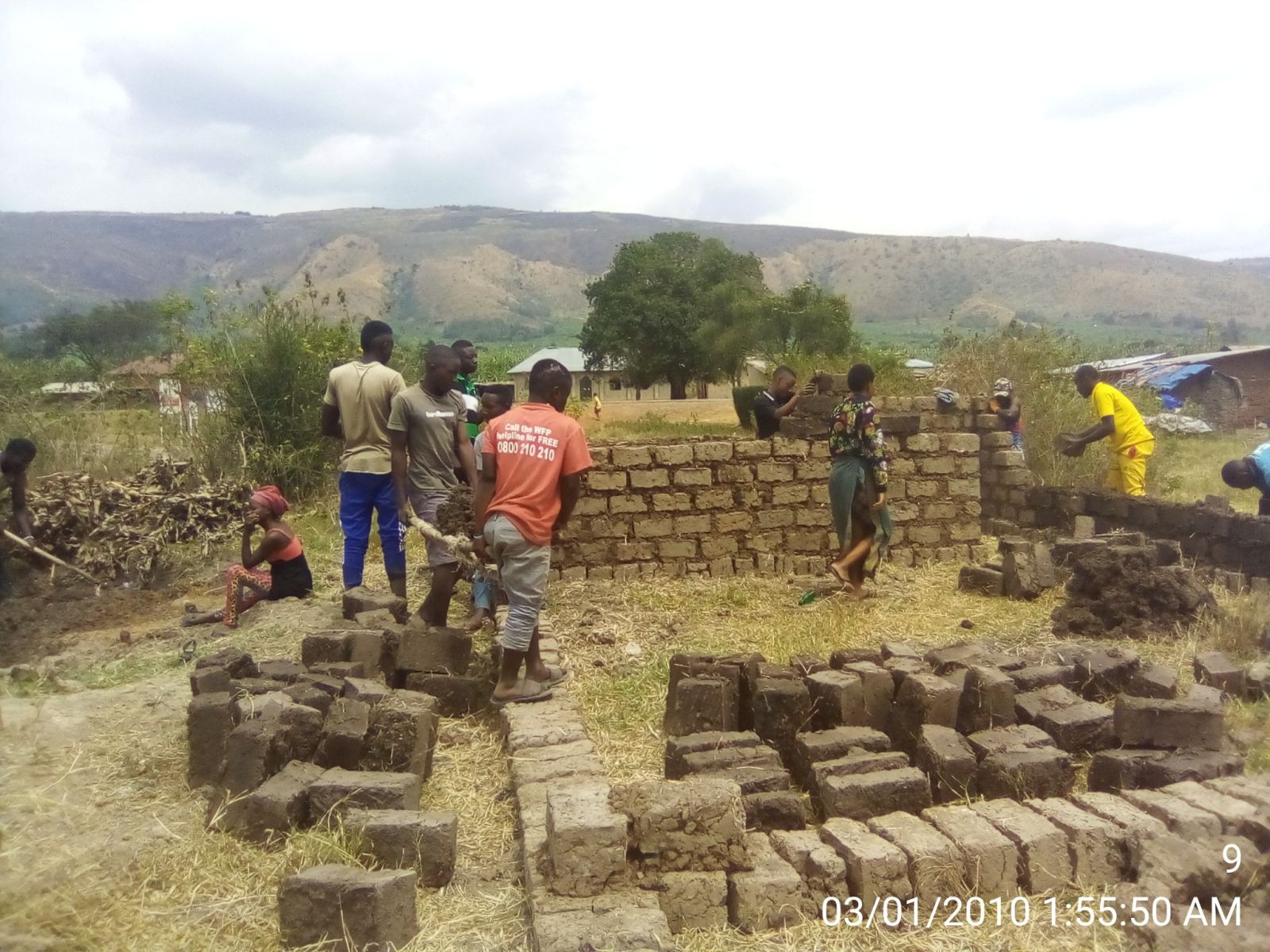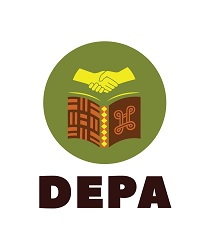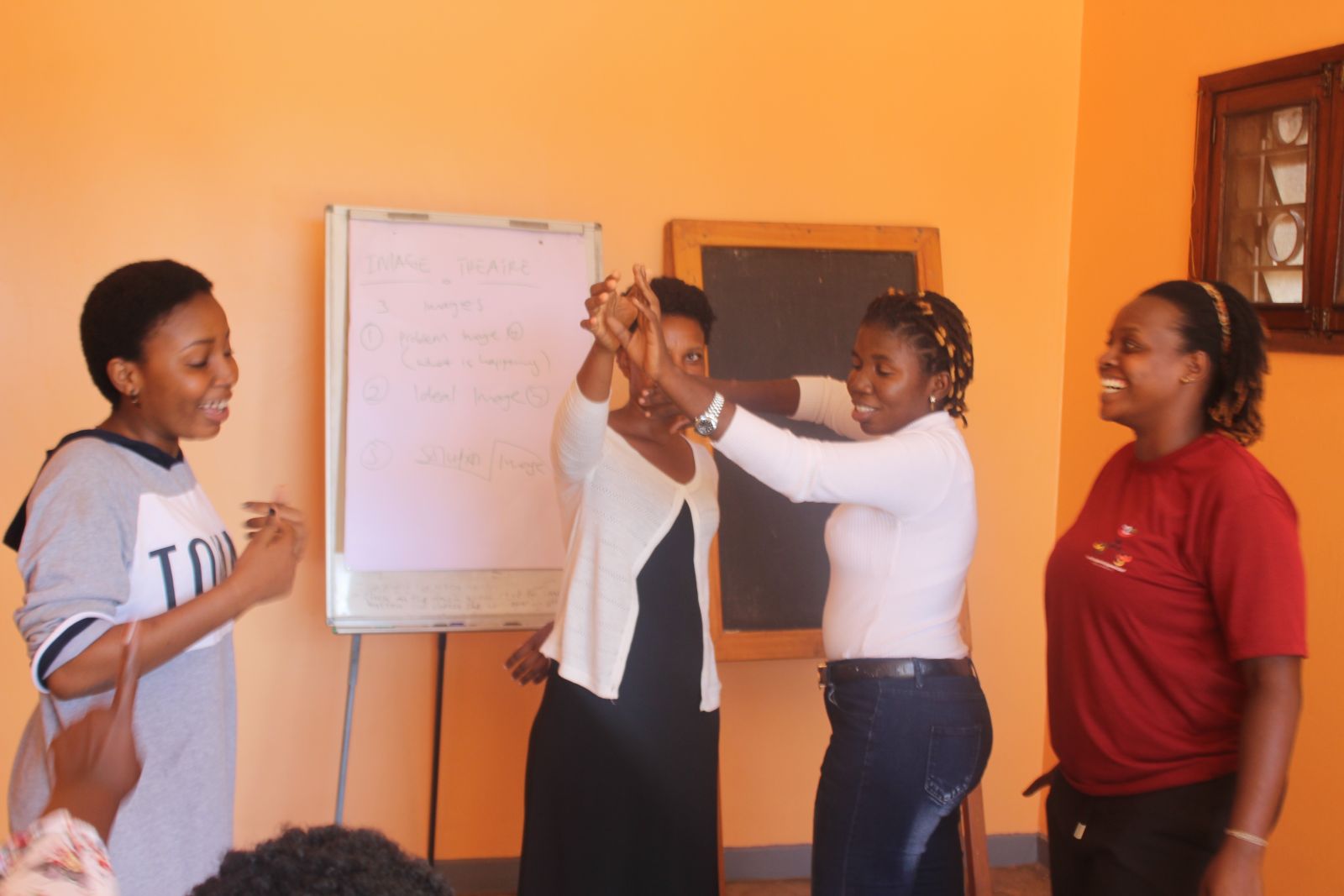Decolonising research with refugee populations: PhotoVoice for rights, peace and justice
Project Introduction
- Location – Kampala, and Oruchinga refugee settlement, Uganda.
- Project team – PADEAP Uganda – Tominke Olaniyan, Daphine Atuhaire, Ivan Arrikod, Oliver Natukunda, Joseph Delamonds, Nicole Sombola
- Open University – Craig Walker
How can arts-based methods better support the education and empowerment of refugees and hosting communities to bridge divides and build peace?

The PhotoVoice participant who took this photo meant it to express the refugee youths' (mix of different nationalities) passion and commitment to their own education and futures.
This is the overarching question that has been driving the Proof-of-Concept project in Uganda. Working with diverse refugee groups across the Oruchinga camp and in Kampala, along with Ugandan communities with whom they live alongside, the research has brought together three distinct arts methods (PhotoVoice, Image Theatre and Digital Storytelling) into a blended approach through which to explore knowledges and values of peace. The notion of peace has been investigated through two specific thematic issues, identified by the participants themselves.
With youth, the pressing concern is citizenship when you are living in situations where your right to be and belong is precarious.
For the women in the research, the question is how to find and create peace against a pervasive culture of gender-based violence.
While the groups have examined each topic independently, bringing their own understandings and experience to bear on the problem, the women and youth then collectively came together to look at refugee-host community relations. While the project is ongoing, the research team will now work in partnership with the participants to use the knowledge and data created in the project to develop training and policy resources that can be used to educate and inform a range of stakeholders.
Uganda hosts the largest refugee population in Africa. At 1.6 million people, the majority are those fleeing wars and violence within the Great Lakes Region because Uganda has, relative to many of its neighbours, seen extended periods of stability without outbreaks of violent conflict. The country has also historically operated an ‘Open Door’ approach to receiving refugees, affording; access to the right to work, freedom of movement and a plot of land on which to live and cultivate crops to promote self-sufficiency. The majority of displaced people are housed in 11 refugee camps throughout the country. Typically, away from large population centres, there are, however, surrounding Uganda communities. The camps do not have formal boundaries, segregating them from the local populations, so refugees and locals interact. In fact, in many contexts, public sites and services such as schools, hospitals and marketplaces are shared. Similarly, refugee populations in urban centres like Kampala will be living and sharing services and resources.
There is a dominant narrative within the international community and in humanitarian and aid circles that refugees are a cause of tension and conflict with their host neighbours. This is because their presence either puts pressure on often stretched existing services and infrastructure or, that refugees receive preferential treatment – getting access to resources and services that local communities don’t. In many of the rural locations where the settlements are housed, the surrounding Ugandan population are living in and experiencing high levels of poverty and marginalisation. Consequently, the approach to educating and building peace becomes one of intervention or prevention – trying to end violence if there are outbreaks or stopping the conflicts escalating into violence in the first place.
The Uganda Proof of Concept has intentionally tried to flip this narrative.
Instead of looking at what might be the causes of conflict in refugee-host relations, the project has explored where these communities are, and have, been living together peacefully. And, importantly, why?
The research has built on a small pilot project that ran in 2017 and 2018 in the Oruchinga refugee settlement that looked at how the PhotoVoice arts-based method might be a catalyst for bridging divides among refugee groups and between refugees and host Ugandan nationals. Through bringing youth together, giving PhotoVoice training and then both individually and collectively taking and discussing photos of issues that affected the youth, the project looked at the PhotoVoice process as a catalyst for peaceful relational transformation. Oruchinga was chosen because it was established in 1959 as a transit camp for refugees fleeing the violent conflict in Rwanda. However, it has remained a stable site for refugees ever since and has become home to many, meaning there are multiple generations of refugees who have been born in the settlement, never setting foot in their home country. The settlement has over six decades of lived experience of refugees and Ugandans coexisting.
Project Methodology
The project uses participatory arts-based methods and embeds the principle that participant inclusion should be throughout the life of the project. As such, participants have been active in shaping the research from the initial design stages, through data creation and into plans for the educational resources and dissemination and impact activities
The two main focal groups have been women and youth (aged 18-35) and the research teams have collaborated with cohorts of both groups across to research sites, Kampala and the refugee settlement of Oruchinga in the South-West of Uganda. The research team wanted to expand to Kampala recognising that there is a significant urban refugee population who may experience and understand peace differently than those in settlement settings.
Exploring Innovative Arts-Method Design
Arts-based methods are, by design, intended to be emancipatory – elevating and finding new ways for the voice of participants to inform and affect change. Through the learning during the PhotoVoice pilot, some aspects of the method were identified as limiting the ability of photos to communicate messages and empower the participants. As a result, the team decided to incorporate two additional arts-methods into this research. The intent is that each brings different forms of expression and mediums for communication that, in combination will complement to amplify the voice of those in the research to reach wider audiences and enhance the prospects for bringing practical and transformative change.
" Refugee women have no say when it comes to issues in their communities or even in their houses. I want people to see this picture and give a woman a chance to speak out and be listened to because they have a lot going on in their lives.” Congolese refugee in Uganda

PhotoVoice
All participants took part in PhotoVoice training, taking photos individually and collectively that represent the issues that the project explores. Images range from identifying the problems, as they see them, to possible solutions. The photos are a powerful way of conveying an understanding of views and experiences when text and speech are limiting.
Digital Storytelling
Storytelling as a research tool may adopt various formats. One that has found prominence in recent years is digital storytelling (DST), a short form of digital media production that allows everyday people to express and share aspects of their stories. The participants have created short videos exploring the issues they want to express using images and videos that tell their story over the top of photos they have taken during the PhotoVoice process. The introduction of this method was to complement images but bring the vocal dimension, the participants' actual voice, into the arts-outputs.

Image Theatre
An arts method that uses performative and embodied techniques to explore issues being faced by the participant communities. In small groups, participants discuss the problem and then, together, use their own bodies to create a tableaux still image that represents the situation and a message they want to express. Feedback is invited from other small groups to see if the still image is giving the intended message or the tableaux needs to be refined.
The research design and methodology has been an evolutionary process that has taken multiple pathways, testing and exploring with participants. Here, you can hear a song devised by a group of young refugees. The youth are of different nationalities and the song is an expression of peace proverbs and parables from their cultures woven together.
Listen to the Uganda Refugee Youth Rap from the project
Project Highlights
The project is in the latter stages of data co-creation but one of the defining features of the work has been the participatory approach to working with the participants.
Decolonising research cultures and practices has many branches, from challenging hierarchies of knowledges (who sets research agendas and what/whose knowledges count); addressing biases in research ecosystems (such as funding conditions and constraints; opening research processes to more inclusionary and equitable participation of researched communities and disrupting asymmetries in power arrangements (Thambinathan & Kinsella, 2021).
In Uganda, a primary focus of the project's decolonial agenda has been to - contest and explore ways of working in research partnerships. How might the dynamics of relationships and roles between researcher and researched be rethought and reconfigured? Discussions on the topic tend to centre on generating equity within partnerships by addressing power asymmetries. Through doing this project, we would argue that being blind to power differentials ignores important realities, which need to be recognised and discussed throughout the research process. Three of these aspects that have emerged include:
Rethinking research partnerships tends to still assign roles and responsibilities in exclusive ways – the researcher, participant, NGO partner, and community researchers. Through the Uganda project, we have seen team members occupying different spaces, positions, and functions at points throughout the research process. The NGO partner, for example, leads aspects of research design, producing literature reviews and leading on academic outputs. The community researchers leading sessions on the design process, delivering arts training and organising output events.
Introducing the idea of multiple roles highlights the complexity of power relations in research projects.
Social and Political Transformation. Decolonial, participatory and arts-based research often hold empowerment and emancipation as critical outcomes in projects. Ambitious agendas of impact and change for those participating. Yet, taking PhotoVoice as an example, the transformative elements of research remain the least researched and understood dimension of the methodology. It is common for projects to stop at analysis and academic outputs.
Ensuring change is integral and remains part of the research conversation is important for decolonising.
It needn’t be on a grand policy scale. In Uganda, we have seen a youth group form from the project, eager to be a positive force in their community. The participants also took the lead, organising events within their communities.
The Relationship Marathon
Developing relations between all parties to research should be a critical step in decolonising ways of working. The time investment and spaces required for relationship building, however, are often overshadowed by practicalities and realities within the research ecosystem, risking it becoming a ‘nice extra’ to do.
At an early stage, a WhatsApp group was set up including UK and Ugandan academics, NGO partners and community researchers. This simple step created a space for continual engagement and sharing of ideas and information. While not without complications, it disrupted hierarchical lines of communication (academic-NGO-research site) and, over time, simultaneously deepened academic understanding of context, and participant insight into the project's aims and objectives, arguably enriching the data created and analysis.
.jpg)
The Long Road. A young Congolese man’s representation of the daily struggle and future prospects of life in Oruchinga.
Educational Resources
The project aims to focus on educational peace resources used in informal and vocational training that are developed and co-created through the research process and informed by the emerging data. This will ensure the resources are reflexively fed back to and informed by the participants, with the aim of the final materials being sensitised to and, so, appropriate to the communities and context, allowing them to be used more widely in Uganda and the Great Lakes Region.
Two sets of resources will be produced. Refugee-focused training in:
Citizenship rights and awareness raising and advocacy (youth)
Violence against women and girls and sexual and reproductive health rights (women).
Research “outputs”
Three aspects of the project’s contribution to, or extension of, existing knowledges:
a) Method as peacebuilding – in a context that has a plurality of nationalities, ethnicities, and languages, how the process of PhotoVoice (the taking of, and analysis of photos) may help promote peace.
b) Experimental participation – looking to how research design, implementation and impact can be inclusionary and participant-led to challenge traditional researcher-researched hierarchies.
c) Pushing transformational research agendas – participatory arts methods carry promises of community empowerment and pursuing research outputs that will drive positive change for those participating. Yet, with PhotoVoice, the impact of research projects remains largely underexamined.


